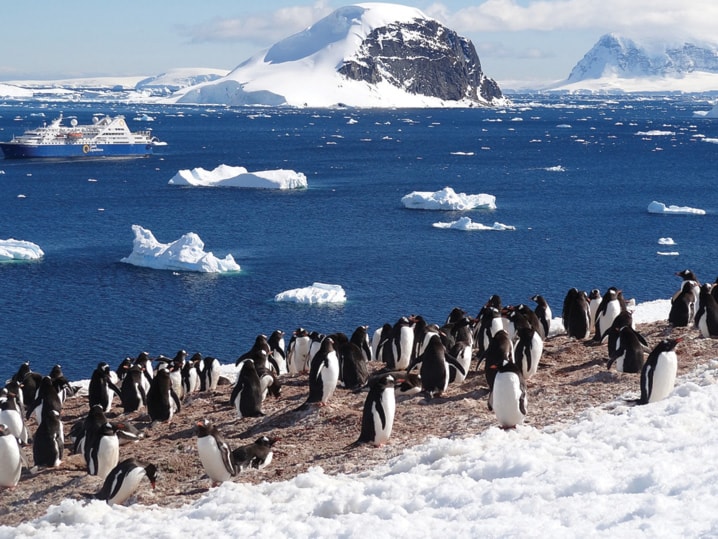Antarctica is the highest continent in the world.
But few go there to climb mountains.
While some people I met on a recent trip were ‘country baggers’ and crossing off the seventh continent with this trip, most were going for the penguins.
I fell in love with penguins before I got to Antarctica, thanks to the Calgary Zoo’s new penguin enclosure, and that love was reinforced watching the birds on the white continent.
Male penguins spend hours snitching rocks from their neighbours’ nests.
Adding a new rock to a nest can curry favour with a female gentoo penguin so males act like obsessed kleptomaniacs as they gather rocks and present them to their mate.
To ensure penguins keep stealing rocks for decades to come, penguinologist Tom Hart of Oxford University runs Penguin Lifelines, a conservation project using photography to monitor penguin population changes and influence government policy.
By placing relatively inexpensive cameras in penguin colonies, Tom and his collaborator, Ben Collen, of the Zoological Society of London, are able to gather population data with fewer researchers and in climate conditions hostile to humans.
With help from tourists and sponsors, Penguin Lifelines is assisting ever more penguins.
Quark Expeditions offered free passage to Tom and Ben during the 2012-2013 Antarctica summer.
In exchange for talking to passengers about their research, Tom and Ben were able to visit penguin colonies dozens of times.
Tom estimates that Quark’s contribution, while relatively minor to Quark as the ship was already making those stops, would cost researchers hundreds of thousands of dollars to replicate the same travel.
As a tourist, I found it fascinating to tag along on Antarctica field research.
Each time we landed, Tom and Ben would don their bright red hats and head into a penguin colony.
The hats were not to impress the penguins, but to tell tourists not to approach.
Penguins must defend their nests against skuas, an aggressive gull, and if people scare the penguins off their nests, the risk of predation increases.
Working quickly, Tom and Ben install new cameras, or change the batteries and memory card in existing cameras, and leave the penguins in peace.
Using photography to improve conservation is an exciting concept.
“The tourists on these boats can afford much more expensive cameras than we can, so why not make use of them too?” Tom suggests.
He hopes to ask photographers on future voyages to take photos from the same position as historical images so that researchers can compare changing snow and ice conditions.
“It is an inexpensive way to gather data,” Tom explains, “and ordinary citizens can help with research.”
So the next time you head out on vacation, you might help throw penguins a lifeline.
If you want more information, Quark Expeditions offers tours with scientists each year at www.quarkexpeditions.com.
If you cannot go to Antarctica, consider donating to the Calgary Zoo’s Conservation Fund. Money goes each year to Penguin Lifelines.
Follow the work of Tom Hart and other researchers at www.penguinlifelines.org.
Carol Patterson helps businesses and people reinvent themselves through adventure. When she isn’t travelling for work, Carol is travelling for fun. More of her adventures can be found at www.naturetravelgal.com.
